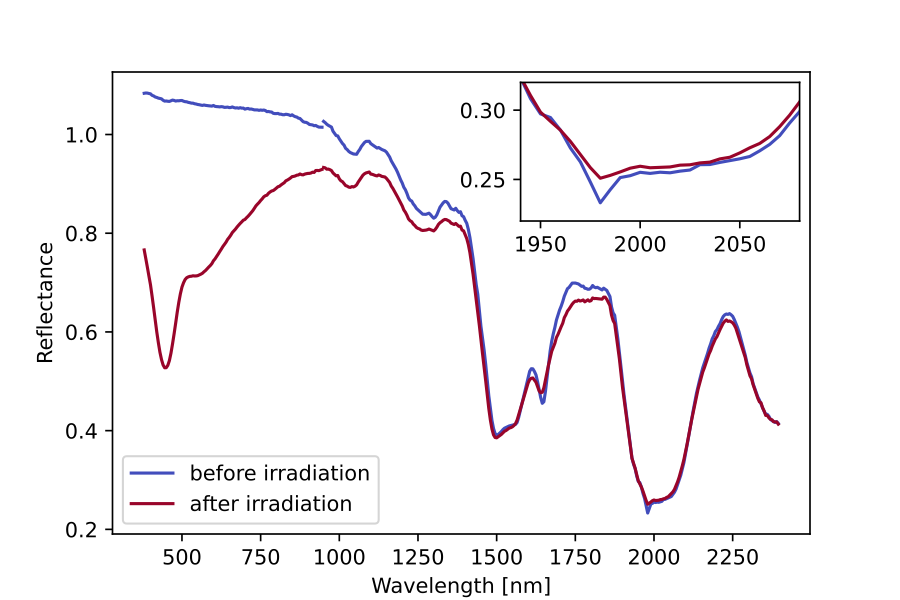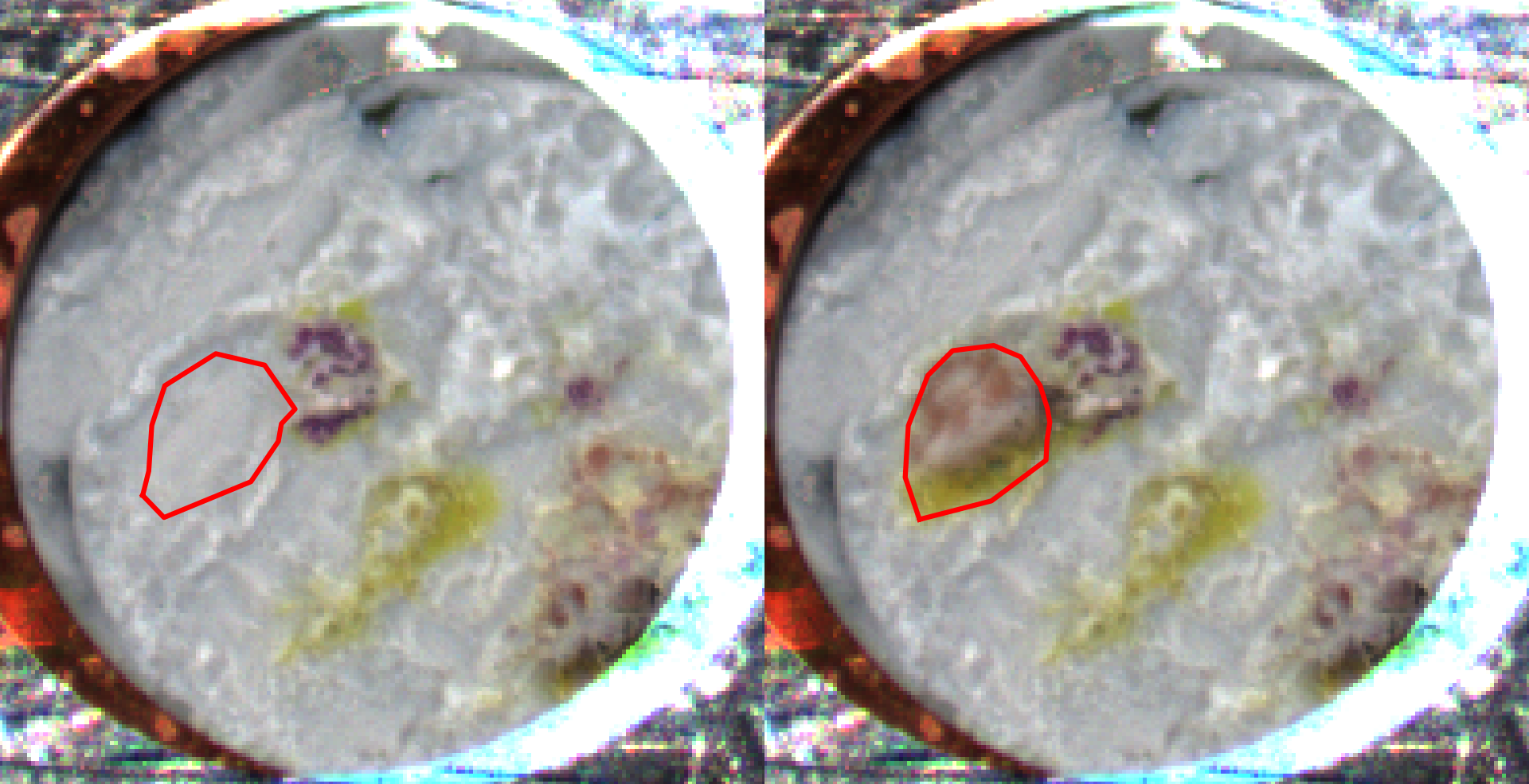- Title
- VIS-NIR reflectance spectra collected before and after electron irradiation (2keV, 3.4 × 10^16 e- cm^(−2)) of spherical salty ice particles (10-100 µm typical particle diameter) produced by freezing droplets of a solution of 5wt.% NaCl
- DOI
- 10.26302/SSHADE/EXPERIMENT_RO_20240701_000
- Data reference
- Ottersberg, Rafael (2024): VIS-NIR reflectance spectra collected before and after electron irradiation (2keV, 3.4 × 10^16 e- cm^(−2)) of spherical salty ice particles (10-100 µm typical particle diameter) produced by freezing droplets of a solution of 5wt.% NaCl. SSHADE/BYPASS (OSUG Data Center). Dataset/Spectral Data. https://doi.org/10.26302/SSHADE/EXPERIMENT_RO_20240701_000
- Publications
- Database(s)
- Experimentalists
- Type(s)
- laboratory measurement
- Description
- Spherical ice particles are produced by spraying droplets of salt solution (5 wt.% NaCl) into liquid nitrogen with the SPIPA-C setup. A centimeter-thick sample made of these particles is then introduced in the MEFISTO simulation chamber where it is irradiated with high-energy electrons: 2keV, 3.4 × 10^16 e- cm^(−2).
- Number of spectra
- 2
- Variable type(s)
-
- irradiation dose
- Instrument
- MoHIS - Hyperspectral imaging system Vis-NIR
- Standard medium
- vacuum
- Observation mode
- spectrum
- Spectral range type(s)
- Vis, NIR
- Valid spectral range(s)
-
Min - Max () Sampling () Resolution () Position accuracy () Absorption edge #1 400.0 - 2000.0 5.0 5.4 #2 2000.0 - 2400.0 5.0 10.8
Definition: incidence and emergence angles are positive with origin at nadir, and vary in same direction. Azimuth origin (increasing clockwise) is for i = e (opposition geometry).
- Observation geometry
- biconical
- Observation mode
- fixed angles
- Incidence angle
- 0.0°
- Emergence angle
- 5.0°
- Azimuth angle
- 0.0°
- Phase angle
- 5.0°
- Observation mode
- roi averaged
- Date begin - end
- 2024-07-01 - 2024-07-01
Versions
- Release date
- 2025-04-18 09:50:55+0000 UTC
- Version (Date)
- #1 (2025-04-18 09:50:55+0000 UTC, Updated: 2025-04-18 09:50:55+0000 UTC)
- Sponsors
-
- NCCR PlanetS (SNSF)

